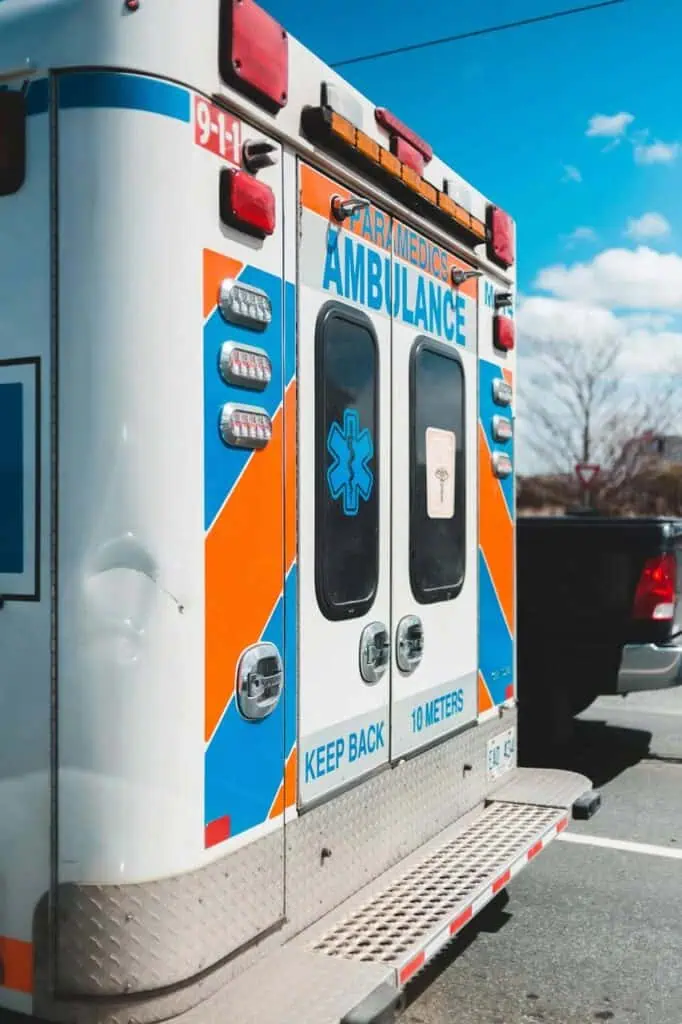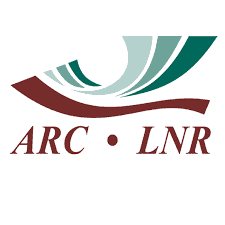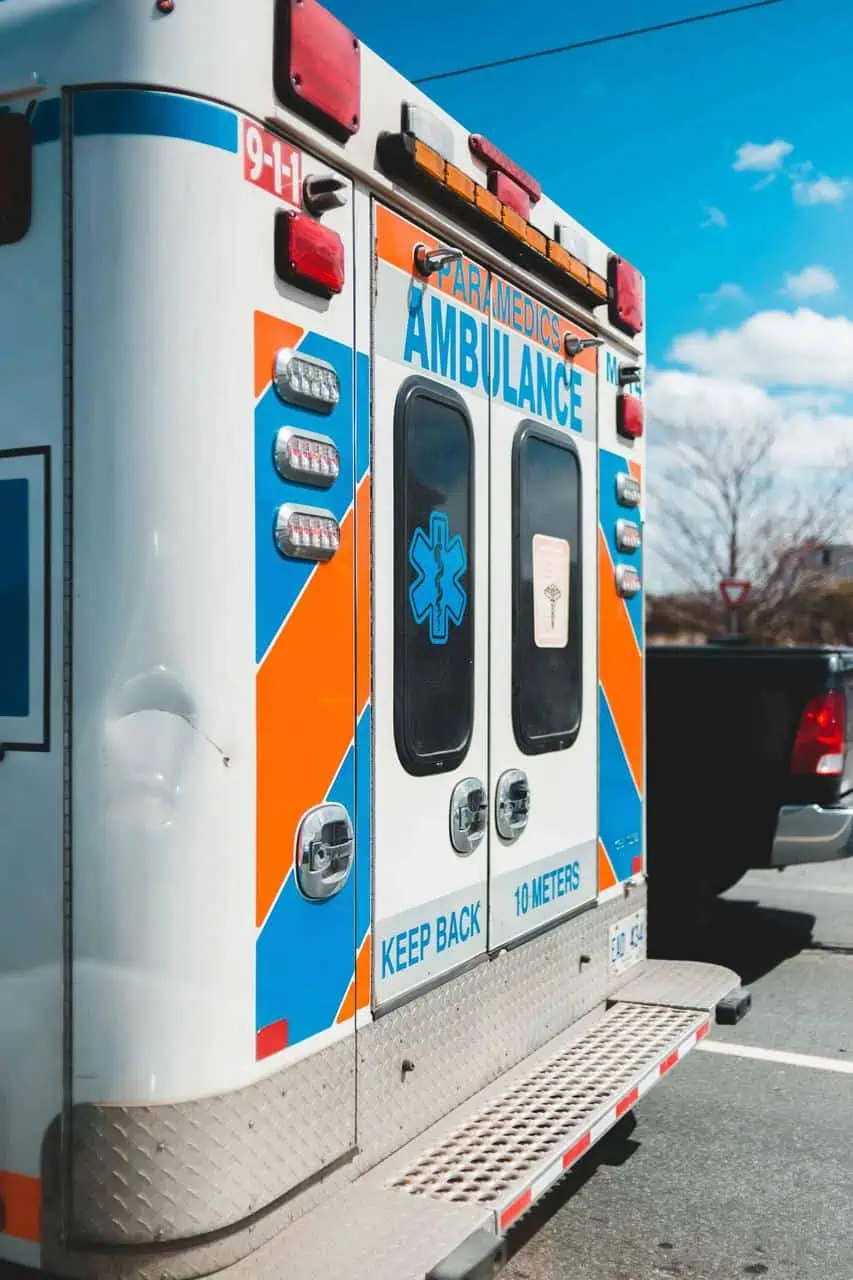Emergency Medical Transport Professional

Introduction to Emergency Transport Career Opportunities
The ambulance driver profession represents a critical component of emergency medical services (EMS), responsible for the safe, efficient transportation of patients requiring urgent medical attention. These specialized vehicle operators combine advanced driving skills with basic medical knowledge to ensure patients reach care facilities quickly while maintaining stable conditions during transport.
Ambulance driving jobs require a unique blend of defensive driving expertise, stress management capabilities, and patient care awareness to effectively navigate emergency situations under high-pressure conditions.
The role encompasses more than just vehicle operation—including route optimization, vehicle readiness maintenance, communication with dispatch centers, and supporting paramedics with basic patient care during transport. This role is part of our Transportation, Warehousing & Distribution Service Career series.
As essential contributors to the healthcare emergency response system, ambulance drivers find diverse career opportunities across hospital systems, private ambulance services, fire departments, and municipal emergency medical services.
For those seeking meaningful work with direct impact on patient outcomes, the ambulance driver career path offers engaging professional challenges that combine driving proficiency with healthcare support, providing a potential entry point into broader emergency medical service careers while fulfilling an essential public safety function.
Emergency Medical Services Industry Overview and Transport Trend
The global demand for qualified ambulance drivers continues to grow as emergency medical services expand to meet increasing healthcare needs and aging population demographics. Job market conditions vary by region, with particularly strong demand in urban centers, areas with hospital consolidation requiring increased inter-facility transfers, and regions implementing enhanced emergency response systems. Employment settings span public sector operations (hospital systems, municipal EMS, fire departments) and private providers (ambulance companies, patient transport services, contracted healthcare transportation), creating diverse work environments within the profession.
Current ambulance driver industry trends reflect significant transformations in both operational protocols and vehicle technology. Response strategies have evolved with tiered dispatch systems that match appropriate resources to call severity, affecting driver deployment patterns and specialized training requirements. Vehicle designs now incorporate advanced safety features, ergonomic patient compartments, and sophisticated medical equipment that ambulance drivers must understand and properly manage during transport. Driver safety has gained increased attention with the implementation of enhanced emergency vehicle operation training, collision avoidance technology, and stricter qualification requirements aimed at reducing accident rates during emergency responses.
Technological advancement is modernizing traditional ambulance operations, with GPS-based dispatch systems, real-time hospital capacity tracking, traffic management technology, and electronic patient care records transforming how ambulance drivers receive assignments and navigate to destinations. These innovations have created new skill requirements for drivers who must operate increasingly complex vehicle systems while maintaining focus on safe transportation. Additionally, integration with broader healthcare networks has expanded the ambulance driver’s role in continuity of care, requiring greater understanding of medical protocols and patient information management. These industry developments have enhanced the profession’s complexity while reinforcing the essential role skilled ambulance drivers play in effective emergency medical response systems.
3. Ambulance Driver Job Availability & Global Salary Comparison
📌 Emergency Vehicle Operator Job Availability Assessment
Ambulance driving positions span diverse healthcare and emergency service settings, with varying entry requirements and specialization opportunities:
- Primary Employment Sectors: Hospital-based ambulance services, private ambulance companies, municipal emergency medical services, fire departments with EMS responsibilities, and non-emergency medical transport providers
- High-Demand Positions: Emergency response drivers, inter-facility transport operators, critical care transport drivers, and non-emergency medical transporters
- Leading Regions for Ambulance Jobs: United States (particularly urban centers), United Kingdom (NHS Ambulance Trusts), Australia, Canada, Germany, and Scandinavian countries
- Qualification Requirements: Most positions require commercial driver’s licensing (or equivalent), emergency vehicle operator certification, basic life support training, and clean driving records
- Essential Certifications: Emergency Vehicle Operator Course (EVOC), CPR/Basic Life Support, NIMS/ICS (National Incident Management System), and defensive driving credentials
📌 Ambulance Driver Average Pay Grade (Annual Compensation)
Compensation varies significantly based on location, employer type, emergency vs. non-emergency focus, and required medical qualifications:
- USA: $30,000 – $55,000+ (higher in areas with paramedic-driver integration)
- UK: £22,000 – £40,000+ (NHS structured pay bands with progression)
- Canada: CAD $35,000 – $65,000+ (varies significantly by province)
- Australia: AUD $40,000 – $70,000+ (stronger wages in remote areas)
- New Zealand: NZD $35,000 – $65,000+ (publicly funded system with grade progression)
- Europe: €25,000 – €50,000 (varies by country, with higher wages in Northern Europe)
- Asia & South America: $15,000 – $45,000 (significant regional variation based on healthcare system development)
Most ambulance driver positions include shift differentials for nights, weekends, and holidays, which can substantially increase total compensation. Many public sector positions offer stable benefits packages including healthcare, retirement plans, and paid training opportunities that enhance overall compensation value beyond base wages.
📌 Emergency Medical Transport Career Potential Grade
⭐⭐⭐ Moderate Career Growth with Opportunities in Advanced EMS & Healthcare Transport
The ambulance driver field offers several career development pathways:
- Certification Advancement: Progressing from basic driver to EMT-certified transport specialist
- Specialization Development: Moving into critical care transport, bariatric patient transport, or neonatal transport teams
- Supervisory Growth: Advancement to shift supervisor, fleet manager, or operations coordinator
- Technical Progression: Becoming an emergency vehicle operation instructor or fleet safety officer
- Medical Advancement: Pursuing paramedic certification while leveraging driving experience
Career growth typically requires a combination of clean driving records, additional medical certifications, and increasingly, technical proficiency with emergency vehicle systems and medical equipment. The integration of ambulance services with broader healthcare systems creates opportunities for ambitious drivers to develop specialized expertise or transition into related healthcare support roles with additional training.
4. Essential Emergency Driving Skills & Ambulance Operation Requirements
Successful ambulance drivers combine advanced driving capabilities with medical support knowledge and professional communication skills. Employers consistently seek drivers with the following critical capabilities:
Defensive Driving & Emergency Vehicle Operation Expertise
- Implementing proper emergency vehicle operation techniques
- Navigating safely with lights and sirens during code responses
- Executing intersection clearing procedures and traffic management
- Adapting driving to adverse weather and road conditions
- Maintaining vehicle control at variable speeds based on urgency
- Positioning vehicles optimally at emergency scenes
- Practicing collision avoidance techniques during all driving phases
Basic Medical Knowledge & Patient Transport Support
- Understanding fundamental patient care principles during transport
- Assisting paramedics with basic medical procedures when required
- Recognizing signs of patient deterioration requiring immediate action
- Implementing proper patient loading and securing procedures
- Adapting driving to specific patient conditions and medical needs
- Maintaining vehicle stability to support ongoing patient care
- Facilitating optimal working conditions for medical personnel
Navigation & Emergency Route Planning Skills
- Developing comprehensive knowledge of service area geography
- Utilizing GPS and mapping systems effectively during responses
- Identifying alternative routes during traffic congestion
- Anticipating traffic patterns based on time of day and conditions
- Maintaining familiarity with hospital locations and access points
- Planning efficient multi-destination routes for transfers
- Avoiding known hazards and construction zones during transport
Communication & EMS Team Coordination
- Operating emergency radio systems according to protocols
- Maintaining clear communication with dispatch centers
- Coordinating effectively with receiving facilities and staff
- Working collaboratively with paramedics and EMTs
- Providing accurate scene reports and status updates
- Documenting transport information completely and accurately
- Participating constructively in after-action reviews
Regulatory Compliance & Vehicle Maintenance Management
- Adhering to all transportation regulations and traffic laws
- Conducting thorough pre-shift vehicle inspections
- Identifying mechanical issues requiring immediate attention
- Maintaining proper fuel levels and operational readiness
- Ensuring cleanliness and sanitation of transport compartments
- Completing required vehicle operation documentation
- Managing inventory of vehicle supplies and equipment
Stress Management & Emergency Decision-Making
- Maintaining calm under high-pressure emergency conditions
- Making sound driving decisions with limited information
- Adapting quickly to changing priorities and redirections
- Managing fatigue during extended shifts and night operations
- Coping constructively with emotionally challenging situations
- Sustaining focus during lengthy transport assignments
- Implementing self-care strategies for long-term career sustainability
Certifications & Medical Transport Licensing
- Maintaining appropriate commercial or specialized driving license
- Completing Emergency Vehicle Operator Course (EVOC) certification
- Holding current CPR and Basic Life Support credentials
- Complying with regular driver qualification reviews
- Pursuing additional medical certifications (EMT, Advanced First Aid)
- Meeting physical qualification standards for emergency driving
- Completing required continuing education and refresher training
Educational requirements vary across ambulance services, with most employers requiring at least a high school diploma or equivalent, specialized emergency vehicle operation training, and basic life support certification. Many ambulance drivers begin with commercial driving experience or basic EMT training before specializing in medical transport. The combination of excellent driving history, basic medical knowledge, and strong communication skills creates the foundation for long-term success in this essential healthcare support role.
5. Medical Transport Career Paths and EMS Advancement Opportunities
The ambulance driving profession offers several distinct career progression routes, from entry-level transport to specialized services, leadership roles, and advanced emergency medical positions. Understanding these potential trajectories can help aspiring ambulance drivers strategically develop their skills for long-term career satisfaction and advancement.
Entry-Level Medical Transport Positions
- Non-Emergency Patient Transport Driver: Providing scheduled medical transportation without emergency response requirements
- Ambulance Driver (Basic Life Support): Operating vehicles for emergency calls with BLS-level care
- Hospital Transport Technician: Conducting inter-facility transfers within healthcare systems
- Wheelchair Van Operator: Specializing in mobility-impaired patient transportation
- Driver Trainee: Learning emergency driving under supervision of experienced operators
These roles provide foundational experience in patient transport, vehicle operation, and healthcare system navigation, establishing practical skills necessary for advancement to more complex emergency driving positions.
Mid-Level Emergency Vehicle Career Advancement
- Emergency Medical Driver: Conducting full emergency response with lights and sirens
- EMS Dispatcher: Coordinating ambulance deployment and routing
- Advanced Ambulance Operator: Handling specialized or critical care transports
- Field Training Officer: Teaching new drivers proper emergency vehicle operation
- Special Events Medical Transport Coordinator: Managing ambulance services for large gatherings
Advancement to these positions usually requires 2-3 years of experience, additional certifications, and demonstrated competence in emergency vehicle operation under various conditions.
Senior-Level EMS Transport Leadership Opportunities
- Paramedic (with additional training): Combining advanced medical skills with driving expertise
- EMS Supervisor: Overseeing multiple ambulance crews and responses
- Emergency Response Coordinator: Managing emergency medical transportation systems
- Fleet Operations Manager: Directing ambulance maintenance and readiness programs
- Quality Assurance Specialist: Reviewing transport protocols and safety compliance
These positions typically require 5-7+ years of experience, advanced medical or management training, and demonstrated leadership capabilities within emergency medical services.
Advanced Medical Transportation Expert Roles
- Chief of Emergency Medical Services: Leading entire EMS transportation divisions
- Government Disaster Response Director: Coordinating multi-agency emergency transport
- International Medical Transport Consultant: Developing ambulance systems in various countries
- EMS Education Director: Creating training programs for emergency vehicle operators
- Emergency Management Specialist: Planning transportation components of disaster response
The most successful career transitions for ambulance drivers typically involve:
- Building an exceptional safety record with documented emergency driving experience
- Pursuing progressive medical certifications (EMT, AEMT, Paramedic)
- Developing specialized expertise in areas like critical care transport or neonatal transfer
- Gaining experience across different emergency response models and systems
- Obtaining management training and leadership experience within EMS organizations
For international career advancement, understanding different emergency medical systems, adapting to various vehicle specifications, and developing cultural awareness can significantly enhance professional opportunities in global emergency medical transportation.
Ambulance Driver Resume Writing Strategies for Medical Transport Employment
Creating an effective ambulance driver resume requires highlighting both your driving expertise and patient care capabilities in a format that appeals to emergency service employers. Your application letter should emphasize your safety record and specific skills relevant to emergency medical transportation.
Effective Emergency Vehicle Operator Resume Structure
- Professional Summary: Begin with a concise overview highlighting your driving experience, emergency response capabilities, and key certifications
- Core Competencies Section: List 6-8 relevant abilities that align with ambulance operation requirements
- Driving Experience: Detail your history with specific types of vehicles, emergency responses, and safety record
- Medical Training: Include relevant certifications, patient care experience, and healthcare knowledge
- Emergency Response Record: Highlight experience with code driving, challenging conditions, and successful transports
Best Resume Format for Ambulance Drivers
- Choose a clean, professional layout that emphasizes safety record and certifications
- Use a reverse-chronological format for driving experience
- Limit your resume to two pages, focusing on relevant emergency vehicle accomplishments
- Incorporate strategic section headers that include emergency medical terminology
- Use consistent formatting for certifications, vehicle types, and specialized training
Key Elements to Highlight in Your Medical Transport CV
- Safety Record: Emphasize years of accident-free driving and emergency response
- Vehicle Expertise: Detail experience with specific ambulance types and emergency features
- Response Performance: Note any recognition for response times or professional driving
- Patient Care: Highlight assistance provided to medical staff during transport
- Geographic Knowledge: Emphasize familiarity with service area and hospital locations
Essential Ambulance Driver Skills for Resumes
✔ Emergency vehicle operation certification ✔ Defensive driving techniques in high-pressure situations ✔ Basic Life Support/CPR certification ✔ Radio communication and dispatch protocols ✔ Patient loading and transport stabilization ✔ Emergency route planning and navigation ✔ Vehicle inspection and maintenance knowledge ✔Medical terminology and EMS protocols
Sample Achievement Bullets for Ambulance Transport Resumes
Instead of listing general duties, focus on specific accomplishments:
- “Maintained 100% safety record across 5,000+ emergency transports in high-traffic urban environment”
- “Reduced average response times by 2.5 minutes through optimized route planning and improved pre-response readiness”
- “Successfully completed specialized training in critical care transport, enabling support for high-acuity patient transfers”
- “Recognized with Chief’s Commendation for exceptional driving performance during severe weather emergency response”
Remember to tailor your resume for each application, emphasizing experience relevant to the specific service type. For emergency services, highlight code driving and rapid response capabilities; for medical facilities, stress patient-focused transport; for private services, emphasize reliability and customer service orientation.
A professional resume builder or cv maker can help structure your ambulance driving credentials effectively, ensuring your emergency vehicle operation experience is presented in an organized format that highlights your most valuable skills for potential employers.
7. Emergency Vehicle Operation Interview Questions and EMS Preparation Guidance
Succeeding in ambulance driver interviews requires demonstrating both your technical driving knowledge and your understanding of patient-centered transportation. Prepare for these common questions and scenarios to make a positive impression on potential employers in the emergency medical transportation field.
Common Ambulance Driver Interview Questions
Emergency Driving Assessment
- “How do you handle high-pressure driving situations during emergencies?”
- “What techniques do you use when navigating through heavy traffic during code responses?”
- “Describe your procedure for safely clearing through a red-light intersection.”
Patient-Focused Transportation
- “What steps do you take to ensure patient safety while in transit?”
- “How do you adjust your driving based on the patient’s medical condition?”
- “Describe how you coordinate with medical staff during transport.”
Navigation and Route Planning
- “How do you navigate traffic congestion while responding to emergency calls?”
- “What factors do you consider when planning the fastest route to a hospital?”
- “How do you handle detours or road closures during emergency transport?”
Vehicle Management and Safety
- “Describe your pre-shift vehicle inspection process.”
- “What actions would you take if you noticed a mechanical issue during transport?”
- “How do you maintain focus and alertness during long shifts?”
Emergency Medical Transport Interview Preparation Strategies
Before the Interview:
- Research the ambulance service’s fleet, response area, and typical call volumes
- Review emergency vehicle operation protocols and local traffic regulations
- Prepare specific examples demonstrating your safe driving record and patient care support
- Understand the organization’s mission and role within the healthcare system
During the Interview:
- Connect your driving experience to the specific challenges of the service’s coverage area
- Demonstrate knowledge of both emergency response and routine medical transport protocols
- Show awareness of the collaborative nature of EMS teams and your supporting role
- Emphasize your commitment to safety while achieving prompt response times
Practical Demonstrations: Many ambulance driver interviews include applied components:
- Emergency vehicle operation simulations
- Map reading and route planning exercises
- Vehicle inspection demonstrations
- Radio communication protocol scenarios
Professional Presentation:
- Dress appropriately for a medical service position (clean, professional attire)
- Bring copies of your driving record, certifications, and licenses
- Consider preparing a brief portfolio highlighting your safety record and training
- Demonstrate alertness and good posture reflecting physical readiness for the job
Remember that emergency medical services value drivers who understand both transportation safety and patient care priorities. Showcase your ability to operate vehicles safely under pressure, make sound judgments during emergency responses, and support the overall patient care mission through excellent driving and communication skills.
8. Emergency Medical Transport Career Outlook and EMS Industry Next Steps
The ambulance driver profession continues to offer stable career opportunities within the growing emergency medical services sector. As healthcare systems evolve and populations age, the need for both emergency and non-emergency medical transportation remains consistent, providing ongoing employment prospects for qualified drivers with appropriate certifications and clean driving histories.
Future outlook for ambulance driving careers varies by region and service type. Urban areas typically offer more employment options but may present greater competition, while rural communities often struggle to fill positions but may offer lower compensation. Emergency-focused services generally provide more adrenaline-driven work and sometimes higher pay rates compared to non-emergency transport providers, which might offer more predictable schedules. The integration of ambulance services with broader healthcare networks has created expanded career pathways for drivers willing to pursue additional medical certifications.
For those pursuing an ambulance driving career, strategic skill development is essential. Beyond fundamental emergency vehicle operation certification, focus on building credentials in patient care through EMT or other medical training. Develop comprehensive knowledge of your service area’s geography and healthcare facilities to enhance your value as a driver. Understanding vehicle mechanics and maintenance can further distinguish you as a valuable team member who contributes to overall fleet readiness and reliability.
Your professional development should include maintaining an impeccable driving record, pursuing relevant emergency services certifications, and building relationships within the EMS community. Consider using resources like CV4Students to create a professionally structured resume that effectively showcases your driving expertise and patient care capabilities for ambulance service applications.
The ambulance driver profession offers the satisfaction of providing a critical public service while developing specialized skills in emergency transportation. While the work can be stressful and include irregular hours, it provides the opportunity to directly contribute to patient care outcomes and public safety through professional, efficient medical transport in both emergency and non-emergency situations.
Explore More in This Industry
Looking for other career options in this field?
👉 View more Transportation, Warehousing & Distribution Service Careers.
Resources & Organizations
These featured organizations play an active role in advancing pest management, scientific research, and agricultural development through education, policy, and innovation.

The African Association of Insect Scientists (AAIS) is a professional body committed to strengthening entomological science across Africa through research, education, and pest management innovation.
Visit Site →

The New Zealand Plant Protection Society promotes the science and practice of plant protection through conferences, publications, and collaboration with growers, researchers, and pest control professionals.
Visit Site →

The Agricultural Research Council of South Africa – Plant Protection leads national research efforts in crop protection, biosecurity, pest diagnostics, and integrated pest management (IPM) for sustainable agriculture.
Visit Site →
These organizations are featured for their outstanding contributions to pest management science, training, and global agricultural development.
This Ambulance Driver Career Guide provides general information about the profession globally. Specific requirements, compensation, and opportunities may vary by region, employer type, and individual qualifications. Always research current conditions in your target market when making career decisions.
